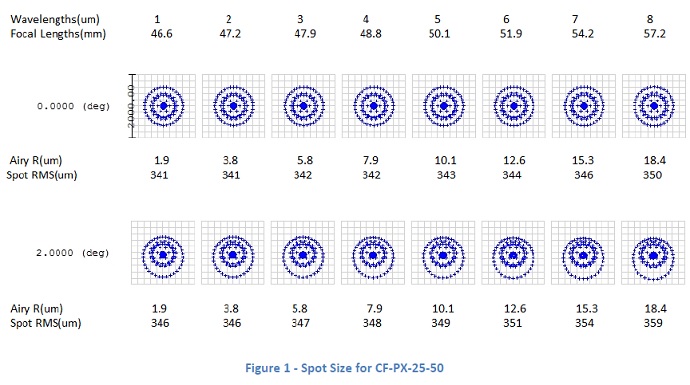June 09, 2014
Andrew Housman, ISP Optics, Irvington, NY. ahousman@ispoptics.com
The current market of infrared optics covers a wide range of wavelengths starting just past the visible range at 800 nm and extending out to 12 μm and beyond with specific demand correlated to the sensitivity of detector arrays and stepping around the water lines due to bending vibration energy levels between 5 and 8 μm. When refracting these wavelengths, lenses are designed with specific wavelengths in mind. Straying outside of these wavelength ranges causes significant shifts in the effective focal length. Many of the common infrared materials additionally do not transmit through the entirety of the popular portions of the infrared range.
• Calcium Fluoride is visibly transparent. Lenses made of the material are designed for 5 μm. CaF2 is a dispersive material in this range, however, and spot sizes from plano-convex lenses are dominated by aberrations. A 1 inch CaF2 plano-convex lens with a 2 inch focal length will have spot sizes around 350 um in the 1-9 μm and is heavily absorbent after 9 μm.
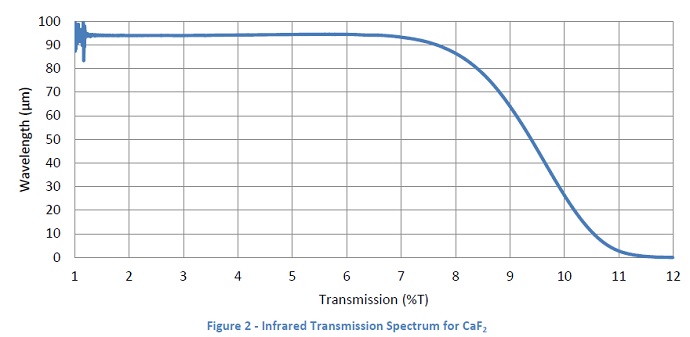
Figure 2 - Infrared Transmission Spectrum for CaF2
• Silicon is another popular infrared material, but it begins to absorb heavily for wavelengths longer than 8 μm with a very strong absorption peak at 9 um. The material is of course also opaque for light below the 1.1 um bandgap. Even when designed to be aspheric to reduce aberrations, the lens is designed to work at 4 μm at normal incidence and loses performance quality as it strays from on-axis alignment.
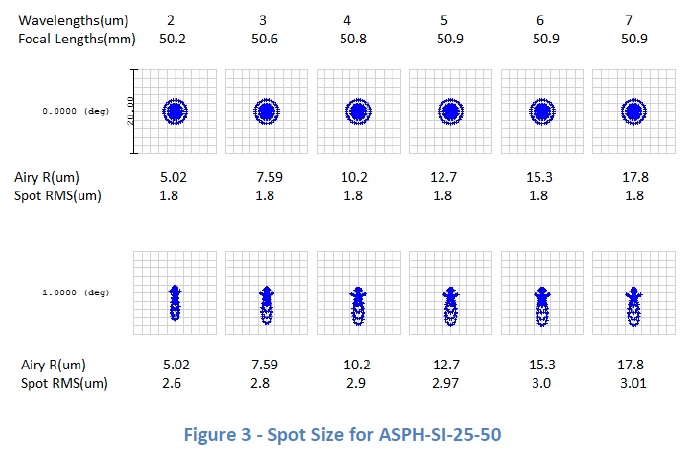
Figure 3 - Spot Size for ASPH-SI-25-50
![]()
Figure 4 - Infrared Transmission Spectrum for Silicon
• ZnSe is a popular material for the infrared because it is transmissive in the part visible spectrum and continues to transmit out to nearly 20 μm, and it is one of the few infrared materials to work well in the long-wave region from 8-12 μm. As such, lenses of this material are generally designed for 10.6 μm, making them significantly less effective at shorter wavelengths. If the ZnSe aspheric lens is designed with only a conic term and no additional coefficients, a 1 inch diameter/2 inch focal length lens will have spot sizes around 11.5 um, more than six times larger than the Silicon counterpart.
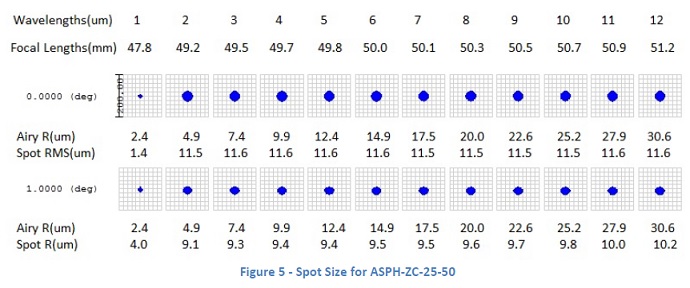
Figure 5 - Spot Size for ASPH-ZC-25-50
A lab which works across the infrared spectrum requires a small library of materials and lens designs to perform well for all of the work that it needs. Large collections of lenses in labs need to be maintained, organized, and tracked in order to remain functional and efficient. The solution is to design a single lens with minimal change in a small spot size over the entire infrared region. It is with this goal in mind that ISP Optics designed the XWL line of Universal Lenses.
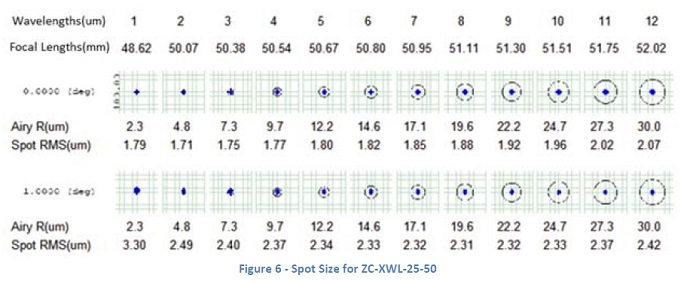
Figure 6 - Spot Size for ZC-XWL-25-50
The lens is designed for even performance across the infrared spectrum. It's spot size ranges from 1.71 μm to 2.07 μm over the full 1-12 μm spectrum. This spot size range is less than 0.5% that of the plano-convex lens, a fifth of the ZnSe aspheric, and on par with the Silicon aspheric (where Silicon is transparent).
It is additionally coated for anti-reflection over the 1-12 μm range. This coating allows for an average of 91% transmission over the entire 1-12 μm range. This broadband coating combined with this broadband lens design indicates a lens that can perform with the combined effectiveness of three other lenses, reducing the need for libraries of lenses or switching out lenses in an optical system when the wavelength changes or shifts.
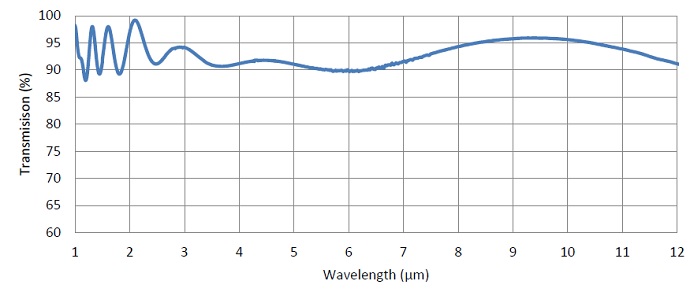
Figure 7 - Performance of BBAR-ZNSE-1-12 Coating
The idler beams from parametric oscillators and amplifiers doesn't need be rerouted or put on hold to adjust lenses as the lens foci move with the changing wavelengths. The combined output of multiple laser sources such as quantum cascade lasers can achieve a more unified path through the same lenses without setting the different focal lengths to average out over a telescope. Labs that work with light across the infrared spectrum will be able to operate with smaller lens inventories.

